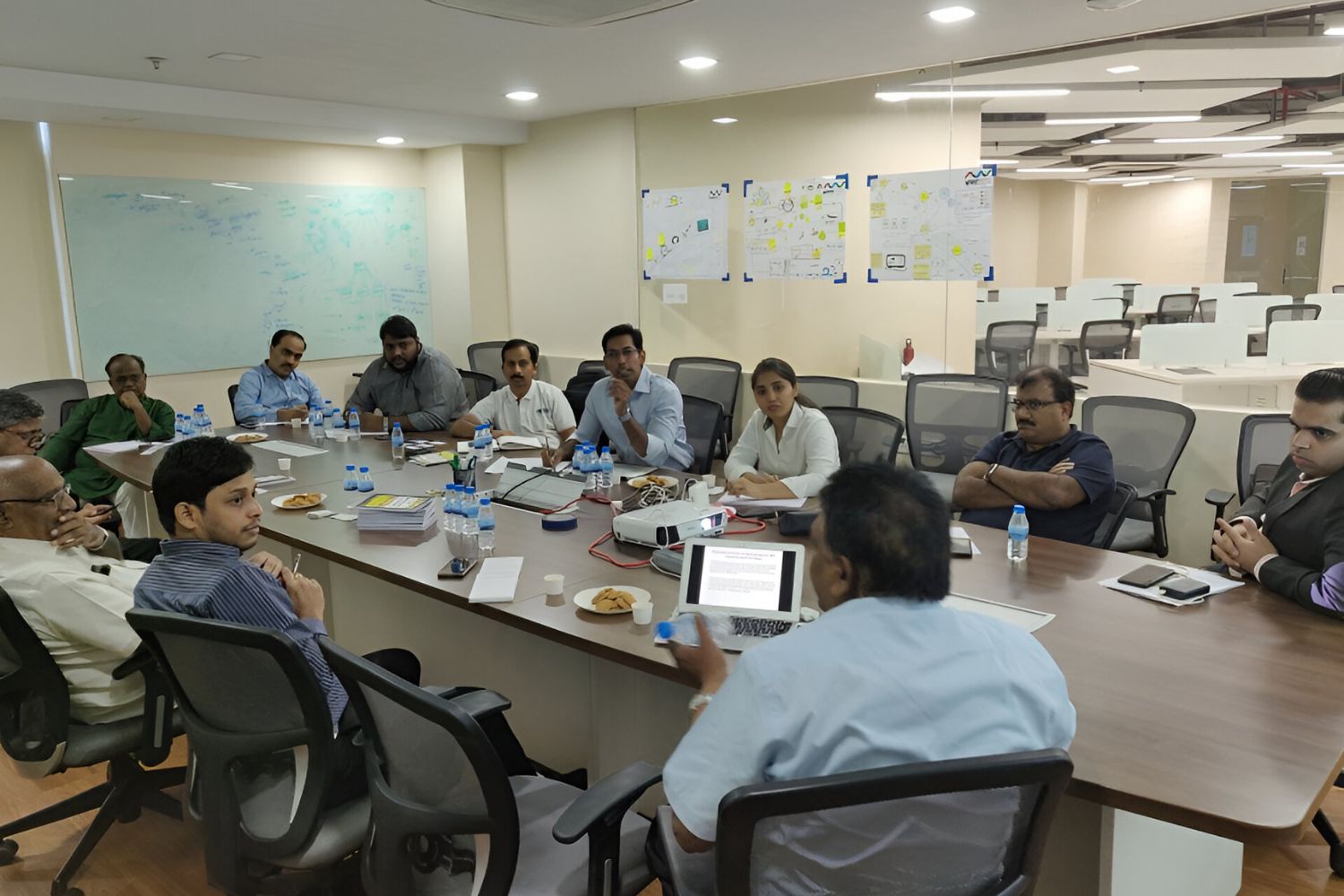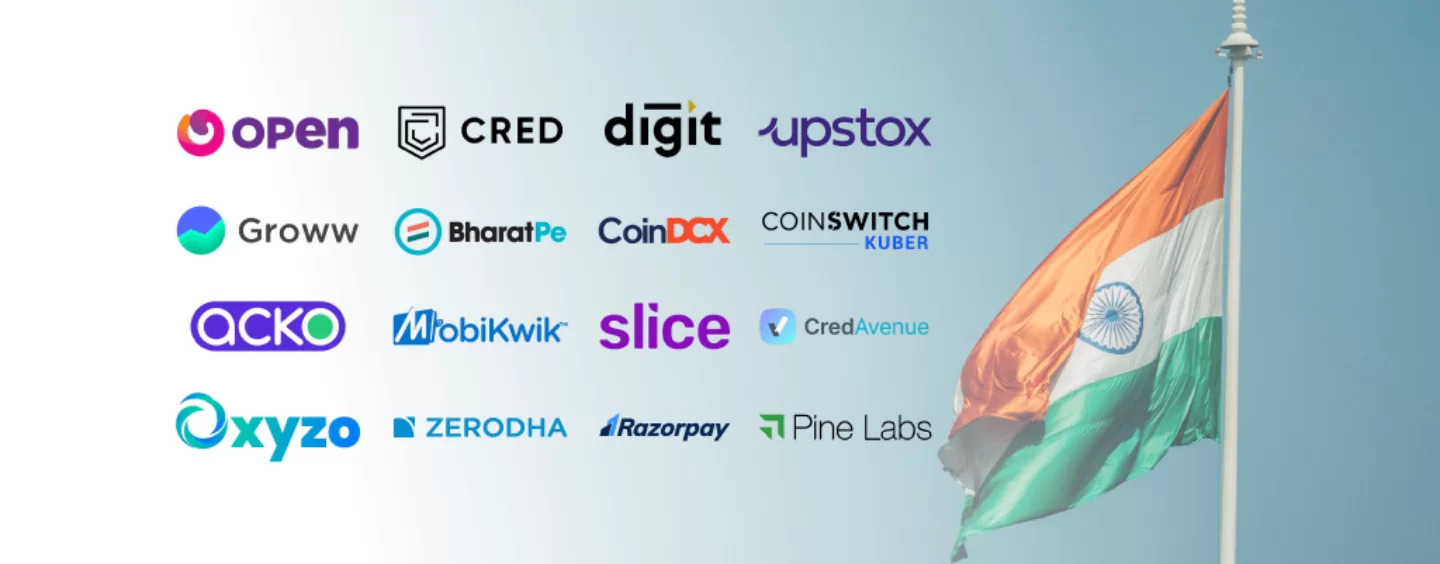Introduction
Welcome to the exciting world of crowdfunding! Crowdfunding has revolutionized the way businesses and individuals raise funds for their projects and ideas. In recent years, it has gained immense popularity as a viable and efficient alternative to traditional fundraising methods. If you are considering starting a crowdfunding business in India, you are tapping into a rapidly growing market with immense potential.
Before diving into the intricacies of setting up a crowdfunding platform, it is crucial to understand the concept and benefits of crowdfunding. Essentially, crowdfunding allows individuals or businesses to raise money for their projects by leveraging the support of a large number of people. This collective effort not only provides financial backing but also serves as a validation of the viability and market demand for the project.
India, with its vast population and growing startup ecosystem, presents a promising landscape for crowdfunding platforms. However, venturing into this field requires careful planning and execution to navigate the regulatory landscape and establish a successful platform. In this guide, we will walk you through the essential steps to help you set up and run a crowdfunding business in India effectively.
It is important to note that crowdfunding exists in different models, such as donation-based, rewards-based, equity-based, and debt-based crowdfunding. Each model has its own rules and regulations, so it is crucial to choose the right model that aligns with your objectives and complies with Indian laws.
As you embark on this entrepreneurial journey, keep in mind that building a successful crowdfunding platform takes time, effort, and a solid understanding of your target audience. Engaging with potential supporters, establishing trust, and creating a compelling marketing strategy are key ingredients for success in this industry. So, let’s delve into the step-by-step process of starting a crowdfunding business in India.
Step 1: Define Your Objective
Before you embark on the journey of starting a crowdfunding business in India, it is essential to define your objective clearly. What do you hope to achieve with your crowdfunding platform? Are you passionate about supporting social causes or do you want to focus on funding innovative startups? Identifying your objective early on will help shape your platform’s direction and attract the right audience.
Consider your personal interests and areas of expertise. Are there specific industries or sectors that you are passionate about? Understanding your niche will allow you to tailor your platform to meet the needs of projects within that space. For example, if you are passionate about technology and innovation, you can focus on supporting tech startups or projects related to artificial intelligence, blockchain, or clean energy.
In addition, you need to determine the type of crowdfunding model that aligns with your objective. The models can be donation-based, rewards-based, equity-based, or debt-based. Each model has its own advantages and considerations, so it is crucial to choose the one that best suits your vision.
Furthermore, defining your target audience is paramount. Who are the potential backers for the projects on your platform? Are they individuals, corporations, or both? Understanding your target audience’s interests, preferences, and motivations will help you craft effective marketing strategies and build a strong community around your platform.
While defining your objective, keep in mind that transparency and integrity should be at the core of your crowdfunding business. Ensuring that the projects listed on your platform adhere to ethical standards and meet the necessary legal requirements will help build trust among backers and enhance the credibility of your platform.
By clearly defining your objective, choosing the appropriate crowdfunding model, and understanding your target audience, you lay the foundation for a successful and impactful crowdfunding platform. Your objective acts as a guiding light as you formulate your business strategy and embark on the exciting journey of supporting aspiring entrepreneurs and projects in India.
Step 2: Choose the Right Crowdfunding Model
Choosing the right crowdfunding model is crucial to the success of your platform. Different models offer unique benefits and considerations, so it’s important to understand each one and select the model that aligns with your objectives and complies with Indian regulations.
1. Donation-based Crowdfunding:
In this model, individuals contribute money to support a cause or project without expecting anything in return. It is commonly used for charitable ventures, social causes, and community projects. Donation-based crowdfunding is driven by a sense of philanthropy and social responsibility.
2. Rewards-based Crowdfunding:
This model involves offering rewards or products to individuals who contribute funds to a project. Supporters receive something of value in exchange for their contribution. Rewards can range from exclusive access to the product, merchandise, or personalized experiences related to the project. Rewards-based crowdfunding is popular for creative projects like films, music albums, video games, and product launches.
3. Equity-based Crowdfunding:
Equity-based crowdfunding allows individuals to invest money in a business in exchange for equity or shares. Through this model, backers become shareholders in the company and may receive financial returns based on the business’s performance. This model is regulated by securities laws and requires adherence to specific guidelines and documentation.
4. Debt-based Crowdfunding:
In this model, individuals lend money to a business or individual with the expectation of receiving repayment with interest over a predetermined period. Debt-based crowdfunding is most suitable for small businesses or individuals looking for loans to fund their projects or endeavors.
Each crowdfunding model comes with its own set of legal and regulatory requirements. It is essential to thoroughly research and understand the Indian regulations governing crowdfunding to ensure compliance with legal obligations. Seek legal advice if necessary to navigate the complexities of the regulatory landscape and operate your crowdfunding platform within the boundaries of the law.
By choosing the right crowdfunding model, you can attract the right projects and backers to your platform, contributing to its success. Remember to consider the nature of the projects you wish to support, the expectations of your target audience, and the legal framework governing crowdfunding in India when making your decision.
Step 3: Research the Indian Regulations
Before diving headfirst into the world of crowdfunding in India, it is crucial to thoroughly research and understand the regulatory landscape governing such platforms. Complying with the applicable regulations is essential to ensure the legality and sustainability of your crowdfunding business.
In India, crowdfunding falls under the purview of various regulatory authorities and laws, including:
1. Securities and Exchange Board of India (SEBI):
SEBI regulates equity-based crowdfunding and crowdfunding platforms that offer shares or equity to investors. SEBI guidelines aim to protect the interests of investors and ensure transparency in the fundraising process. It is important to understand and comply with the SEBI guidelines to avoid legal implications and build trust among investors.
2. Reserve Bank of India (RBI):
RBI is responsible for overseeing debt-based crowdfunding platforms that involve lending transactions. If your platform facilitates loans or debt transactions, you must understand and comply with RBI regulations regarding lending, interest rates, and loan documentation.
3. Income Tax Department:
Income tax regulations play a significant role in the crowdfunding space. It is necessary to understand the tax implications for both the crowdfunding platform and the project creators. Familiarize yourself with income tax laws related to crowdfunding income, investment gains, and creditor obligations.
4. Companies Act and Company Law Board (CLB):
If you plan to operate your crowdfunding platform as a registered company, you need to comply with the provisions of the Companies Act. This includes adhering to reporting requirements, corporate governance practices, and shareholder rights.
Furthermore, you must be aware of any additional regulations or guidelines issued by these regulatory authorities regarding crowdfunding activities in India. Stay updated with the latest developments and seek legal advice to ensure full compliance with all applicable laws and regulations.
In addition to regulatory compliance, it is essential to consider other legal aspects, such as data protection and privacy laws, intellectual property rights, and consumer protection laws, when setting up and operating your crowdfunding platform.
By conducting thorough research and understanding the Indian regulations governing crowdfunding, you can build a legally compliant platform that operates within the framework of the law. This will not only protect your platform from legal repercussions but also enhance trust among backers and project creators.
Step 4: Set Up Your Crowdfunding Platform
Setting up your crowdfunding platform is a crucial step in starting your crowdfunding business in India. This involves various technical and operational aspects that require careful consideration.
1. Choose the Right Technology:
Selecting the right technology for your crowdfunding platform is essential for ensuring its functionality, scalability, and security. Consider whether you want to build a custom platform or utilize existing crowdfunding software. Evaluate the features, ease of use, and customization options to determine the most suitable technology for your platform’s needs.
2. Design and User Experience:
Creating an attractive and user-friendly design is paramount to engage both project creators and backers. A well-designed platform with intuitive navigation and clear call-to-action buttons will enhance the user experience and encourage user participation.
3. Payment Gateway Integration:
Integrating a reliable and secure payment gateway is crucial for facilitating transactions on your crowdfunding platform. Choose a payment gateway that supports multiple payment options, provides robust security measures, and offers seamless integration with your platform.
4. Project Submission and Approval Process:
Establish a streamlined process for project submission and approval. Clearly communicate the submission guidelines and review criteria to project creators. Implement a thorough review process to ensure the quality and feasibility of the projects listed on your platform.
5. Backer and Creator Communication:
Enable effective communication channels between project creators and backers. Features like project update notifications, comment sections, and messaging systems foster engagement, transparency, and trust. Encourage creators to provide regular updates to keep backers informed about project progress.
6. Legal Documentation and Terms of Service:
Prepare comprehensive legal documentation, including terms of service, privacy policy, and user agreements. Clearly outline the rights and responsibilities of project creators, backers, and your platform. Ensure compliance with applicable laws and regulations while protecting the interests of all stakeholders.
7. Implement Security Measures:
Implement robust security measures to safeguard user data, transactions, and platform integrity. Secure Socket Layer (SSL) certificates, encryption protocols, and regular security audits are essential to protect your crowdfunding platform and gain the trust of users.
Remember to test your platform thoroughly before launching it to address any technical glitches or user experience issues. Solicit feedback from early users to fine-tune the platform and make improvements.
By carefully setting up your crowdfunding platform, you lay a strong foundation for creating a user-friendly, secure, and efficient platform that connects project creators with backers and facilitates successful crowdfunding campaigns.
Step 5: Formulate a Marketing Strategy
Formulating an effective marketing strategy is essential to attract project creators and backers to your crowdfunding platform. A well-designed and targeted marketing strategy will help generate awareness, enhance visibility, and drive user engagement. Here are some key steps to consider when formulating your marketing strategy:
1. Identify Your Target Audience:
Understand the demographics, interests, and preferences of your target audience. Determine the types of projects and causes they are most likely to support. Tailor your marketing messages and activities to resonate with your target audience and address their needs and aspirations.
2. Build an Online Presence:
Develop a strong online presence through a well-designed website, engaging social media profiles, and relevant content. Utilize search engine optimization (SEO) techniques to improve your platform’s visibility in search engine results. Regularly update your website and social media profiles with valuable content to attract and engage users.
3. Content Marketing:
Create high-quality and informative content related to crowdfunding, entrepreneurship, and project success stories. Publish blog articles, videos, infographics, and case studies to position your platform as a thought leader in the crowdfunding ecosystem. Share this content on your website, social media platforms, and relevant online communities to attract and educate your target audience.
4. Partner with Influencers and Industry Experts:
Collaborate with influencers, industry experts, and prominent individuals in your target market to promote your platform. They can contribute guest blog posts, share their success stories, and endorse your platform to their followers, expanding your reach and credibility.
5. Utilize Social Media Marketing:
Leverage the power of social media platforms to connect with your target audience. Create engaging and shareable content, run targeted ad campaigns, and actively engage with your followers. Encourage backers and project creators to share their crowdfunding experience on social media to amplify your platform’s visibility.
6. Partnerships and Collaborations:
Establish strategic partnerships and collaborations with relevant organizations, communities, and industry influencers. Collaborative marketing initiatives, joint campaigns, and cross-promotions can significantly expand your reach and attract a wider audience.
7. Email Marketing:
Build an email list and leverage email marketing to nurture relationships with your audience. Regularly send updates, project highlights, success stories, and other valuable content to your subscribers. Personalize your emails and segment your audience to ensure relevant and targeted communication.
Remember, your marketing strategy should be dynamic and adaptable. Regularly assess the effectiveness of your marketing efforts, analyze user data and feedback, and make adjustments accordingly. Stay up-to-date with the latest marketing trends and leverage emerging technologies to stay ahead of the competition.
By formulating a comprehensive and targeted marketing strategy, you can effectively promote your crowdfunding platform, attract quality projects and backers, and establish a strong brand presence in the crowdfunding industry.
Step 6: Create a Compelling Campaign
Creating a compelling campaign is vital to the success of your crowdfunding platform. A well-crafted campaign will grab the attention of potential backers, inspire them to support projects, and drive engagement on your platform. Here are some key components to consider when creating a compelling crowdfunding campaign:
1. Project Selection:
Curate a diverse range of projects that align with your platform’s objective and resonate with your target audience. Select projects that have a compelling story, clear goals, and a well-defined plan for execution. Ensure that the projects are trustworthy and credible, as this will instill confidence in potential backers.
2. Compelling Project Descriptions:
Create engaging and concise project descriptions that convey the uniqueness and impact of each project. Clearly communicate the project’s goals, timeline, budget allocation, and any rewards or benefits for backers. Utilize visuals, such as images and videos, to enhance the appeal and credibility of the project.
3. Reward Structure:
Design an enticing reward structure that incentivizes backers to contribute to projects. Offer a range of rewards at various contribution levels to cater to different budgets and interests. Ensure that the rewards are unique, valuable, and relevant to the project and its target audience.
4. Storytelling:
Craft compelling narratives that draw potential backers into the story behind the project. Highlight the problem the project aims to solve, the impact it will make, and the passion and dedication of the project creator. Utilize emotional appeal, personal anecdotes, and real-life examples to create an emotional connection with potential backers.
5. Social Proof and Trust:
Showcase testimonials, endorsements, and success stories from previous projects to build trust and credibility. Highlight any media coverage, prominent backers, or significant achievements related to your platform. Social proof plays a crucial role in convincing potential backers that their contribution will make a difference.
6. Clear Call-to-Action:
Include a clear and prominent call-to-action that prompts potential backers to take action. Use persuasive language and provide easy-to-follow instructions for contributing to the project. Make the process of backing a project simple and user-friendly to encourage participation.
7. Continuous Engagement:
Engage with project creators and potential backers throughout the campaign to maintain active participation. Encourage project creators to provide regular updates, share behind-the-scenes content, and interact with backers. Foster a sense of community by facilitating discussions, answering questions, and addressing concerns.
Remember that creating a compelling campaign requires a deep understanding of your target audience and aligning the campaign with their interests and motivations. Continuously monitor the performance of your campaigns, gather feedback, and make adjustments to optimize results.
By creating compelling campaigns, you can attract attention, generate excitement, and motivate backers to contribute to the projects on your crowdfunding platform. This will ultimately lead to increased success and growth of your platform.
Step 7: Implement Effective Communication Channels
Implementing effective communication channels is crucial for fostering engagement and building trust on your crowdfunding platform. Clear and consistent communication can help create a thriving community of backers and project creators. Here are some key aspects to consider when implementing communication channels:
1. Project Updates:
Encourage project creators to provide regular updates on the progress, milestones, and challenges of their projects. Regular project updates keep backers informed and engaged, and demonstrate transparency and accountability. Implement a system that allows project creators to easily submit updates and ensure that these updates are visible to backers on the platform.
2. Backer-Project Creator Communication:
Facilitate direct communication between backers and project creators. Implement messaging systems or comment sections where backers can ask questions, provide feedback, and interact with the project creator. Encouraging open and transparent communication builds trust and strengthens the relationship between backers and project creators.
3. Community Forums:
Create a community forum where backers, project creators, and other stakeholders can engage in discussions, share insights, and exchange ideas. Community forums foster a sense of belonging and encourage collaboration within the crowdfunding community. Monitor the forum to ensure healthy conversations and address any concerns or disputes promptly.
4. Email Notifications:
Implement an email notification system to keep backers informed about important updates, new project launches, and upcoming campaigns. Personalize these notifications based on backers’ interests and preferences to ensure relevant and targeted communication. Use email marketing tools to automate these notifications and ensure timely delivery.
5. Social Media Engagement:
Utilize social media platforms to engage with your audience and promote projects. Regularly post updates, project highlights, success stories, and other engaging content on your social media profiles. Encourage backers and project creators to share their crowdfunding journey and experiences on social media, tagging your platform to increase visibility.
6. FAQ and Help Center:
Provide a comprehensive FAQ page and a dedicated help center to address common inquiries and concerns. Include detailed information about the platform, guidelines for project submission, rewards fulfillment, and any other relevant topics. Regularly update and improve these resources to ensure clarity and accessibility.
7. Prompt Customer Support:
Offer prompt and efficient customer support to both backers and project creators. Provide multiple channels for support, such as email, live chat, or phone, and ensure quick response times. Resolving issues and concerns in a timely manner demonstrates your commitment to excellent customer service.
By implementing effective communication channels, you create a robust and engaged community around your crowdfunding platform. Clear and transparent communication fosters trust, encourages participation, and builds a strong reputation for your platform.
Step 8: Manage and Monitor Your Campaign
Managing and monitoring your campaign is crucial to ensure its success and make necessary adjustments along the way. A well-managed campaign allows you to track progress, analyze data, and optimize performance. Here are key steps to effectively manage and monitor your campaign:
1. Real-Time Monitoring:
Monitor the performance of your campaign in real-time. Track metrics such as funding progress, number of backers, average contribution, and engagement levels. Leverage analytics tools to gain insights into user behavior and identify areas for improvement.
2. Backer Engagement:
Engage with backers throughout the campaign to maintain their interest and support. Respond to their comments, answer questions, and provide regular updates. Encourage backers to share your campaign on social media and spread the word to their networks.
3. Set Achievable Goals:
Set realistic and achievable goals for your campaign. Define clear milestones and targets that align with your project’s timeline. Breaking down the campaign into stages can help maintain motivation and momentum throughout the duration.
4. Adapt and Adjust:
Monitor the performance of your campaign and be prepared to make adjustments as needed. Analyze data to identify areas of improvement and modify your strategy accordingly. This may involve tweaking the campaign messaging, reward structure, or marketing approach.
5. Maintain Communication:
Continue to communicate with your backers and project creators even after the campaign is funded. Ensure timely delivery of rewards and provide regular updates on the project’s progress. Maintaining open communication reinforces trust and helps build a lasting relationship with your community.
6. Manage Risk Factors:
Identify and manage potential risks that may affect the success of your campaign. Plan contingencies for any unexpected events or challenges that may arise during the campaign. Having a proactive approach to risk management will help you navigate any hurdles that may come your way.
7. Seek Feedback:
Solicit feedback from backers, project creators, and other stakeholders to gain insights and improve your platform. Conduct surveys, host focus groups, or encourage direct feedback to understand their experiences and suggestions for enhancement.
Remember to maintain a positive and transparent approach throughout the campaign. By actively managing and monitoring your campaign, you can optimize its performance, engage with your community, and ensure a successful crowdfunding experience for all involved.
Step 9: Fulfill Your Promises
Fulfilling your promises is a critical step in maintaining the trust and satisfaction of your backers on your crowdfunding platform. It is essential to deliver on what you have committed during the campaign to ensure a positive experience for both backers and project creators. Here are key aspects to consider when fulfilling your promises:
1. Timely Rewards Delivery:
Ensure that rewards are delivered to backers within the promised timeframe. Set realistic timelines for production, packaging, and shipping to avoid delays. Regularly communicate with backers regarding the progress and status of their rewards to keep them informed and engaged.
2. High-Quality Rewards:
Provide rewards that meet or exceed the quality expectations of your backers. Pay attention to detail and ensure that the rewards are as described and shown in the campaign. If there are any unexpected challenges or changes, promptly communicate and offer appropriate solutions or alternatives.
3. Transparent Communication:
Maintain open and transparent communication with both backers and project creators. If there are any unforeseen circumstances that may impact the delivery or quality of rewards, promptly inform the affected parties and provide regular updates. Transparency builds trust and demonstrates your commitment to fulfilling your promises.
4. Resolve Issues and Disputes:
In case of any issues or disputes related to rewards, address them promptly and professionally. Listen to the concerns of backers and project creators and work towards finding satisfactory solutions. Your ability to handle issues effectively will go a long way in maintaining the reputation and integrity of your platform.
5. Monitor Progress:
Continuously monitor the progress of rewards fulfillment. Keep track of whether rewards have been shipped, received, and acknowledged by backers. Maintain records and update your internal systems accordingly to ensure accurate fulfillment data.
6. Provide Post-Campaign Support:
Offer post-campaign support to project creators, especially if their projects require ongoing assistance or have long-term commitments. Help them navigate any challenges they may face and provide resources or guidance as needed. Continuing support reinforces your commitment to their success.
7. Collect and Utilize Feedback:
Solicit feedback from backers and project creators about their experiences with the rewards fulfillment process. Use this valuable feedback to improve your processes, address any shortcomings, and enhance the overall experience for future campaigns. Actively listening to feedback demonstrates your commitment to continuous improvement.
By fulfilling your promises and delivering rewards in a timely and satisfactory manner, you establish a reputation of reliability and trustworthiness on your crowdfunding platform. The positive experience of backers and project creators strengthens the credibility of your platform and encourages further participation in future campaigns.
Step 10: Maintain Good Governance and Transparency
Maintaining good governance and transparency is vital for the long-term success and credibility of your crowdfunding platform. By upholding ethical practices, adhering to legal requirements, and prioritizing transparency, you create a trustworthy and reliable environment for backers and project creators. Here are key factors to consider when maintaining good governance and transparency:
1. Legal Compliance:
Ensure that your platform operates in compliance with all applicable laws and regulations. Familiarize yourself with the legal obligations specific to crowdfunding in India, including financial, data protection, and consumer protection laws. Regularly update your knowledge of any changes in regulations that may impact your platform.
2. Clear Guidelines and Policies:
Establish clear and comprehensive guidelines and policies for both backers and project creators to understand the expectations and rules of your platform. Clearly outline the processes for project submission, rewards fulfillment, dispute resolution, and any relevant terms and conditions. Make these guidelines easily accessible and regularly communicate updates to all stakeholders.
3. Financial Integrity and Accountability:
Maintain financial integrity by accurately and transparently managing funds. Establish proper accounting procedures, track funds received, and ensure accurate distribution of funds to project creators. Clearly communicate your fee structures and any charges involved in the transactions on your platform.
4. Data Privacy and Security:
Safeguard user data and prioritize data privacy and security. Implement appropriate measures to protect personal and financial information. Comply with data protection laws and clearly communicate your data handling practices to users. Seek consent from users before collecting and utilizing their personal data.
5. Transparency in Project Selection:
Be transparent about your project selection process. Clearly communicate the criteria and guidelines used to approve or reject projects on your platform. Project creators and backers should have confidence in the fairness and transparency of your platform’s selection process.
6. Regular Reporting and Updates:
Provide regular reports and updates to both backers and project creators. Be transparent about the performance of your platform, including the number of successfully funded projects, amount of funds raised, and success rates. Share these statistics and data to maintain transparency and build trust.
7. Feedback and Complaint Handling:
Listen to feedback and promptly address complaints and concerns raised by users. Establish an efficient and transparent process for handling feedback and resolving disputes. Actively communicate with users, acknowledge their feedback, and take necessary actions to rectify any issues.
Maintaining good governance and transparency not only ensures compliance with laws and regulations but also builds trust and confidence among backers and project creators. Prioritizing ethical practices and transparency sets the foundation for a sustainable and reputable crowdfunding platform in India.
Conclusion
Congratulations on reaching the end of this guide on starting a crowdfunding business in India! Starting and running a successful crowdfunding platform requires careful planning, execution, and continuous effort. By following the ten steps outlined in this guide, you can set a strong foundation for your crowdfunding venture.
It is essential to define your objective, choose the right crowdfunding model, and research the Indian regulations to ensure compliance with the legal framework. Setting up a user-friendly platform, formulating a comprehensive marketing strategy, and creating compelling campaigns are crucial for attracting the right projects and backers to your platform.
Effective communication channels, diligent campaign management, and fulfillment of your promises will help maintain trust and engagement among your community. By upholding good governance practices and transparency, you establish a reputable and reliable platform for both backers and project creators in the Indian crowdfunding ecosystem.
Remember that success in the crowdfunding industry comes with continuous learning and adaptation. Stay updated with industry trends, solicit feedback from your community, and make necessary adjustments to improve your platform and offerings.
Starting a crowdfunding business in India may come with challenges, but with the right strategy, dedication, and commitment to transparency and ethical practices, you can create a platform that not only benefits project creators and backers but also contributes to the growth and development of the Indian startup landscape.
We wish you every success on your journey to create a thriving crowdfunding platform in India!

























